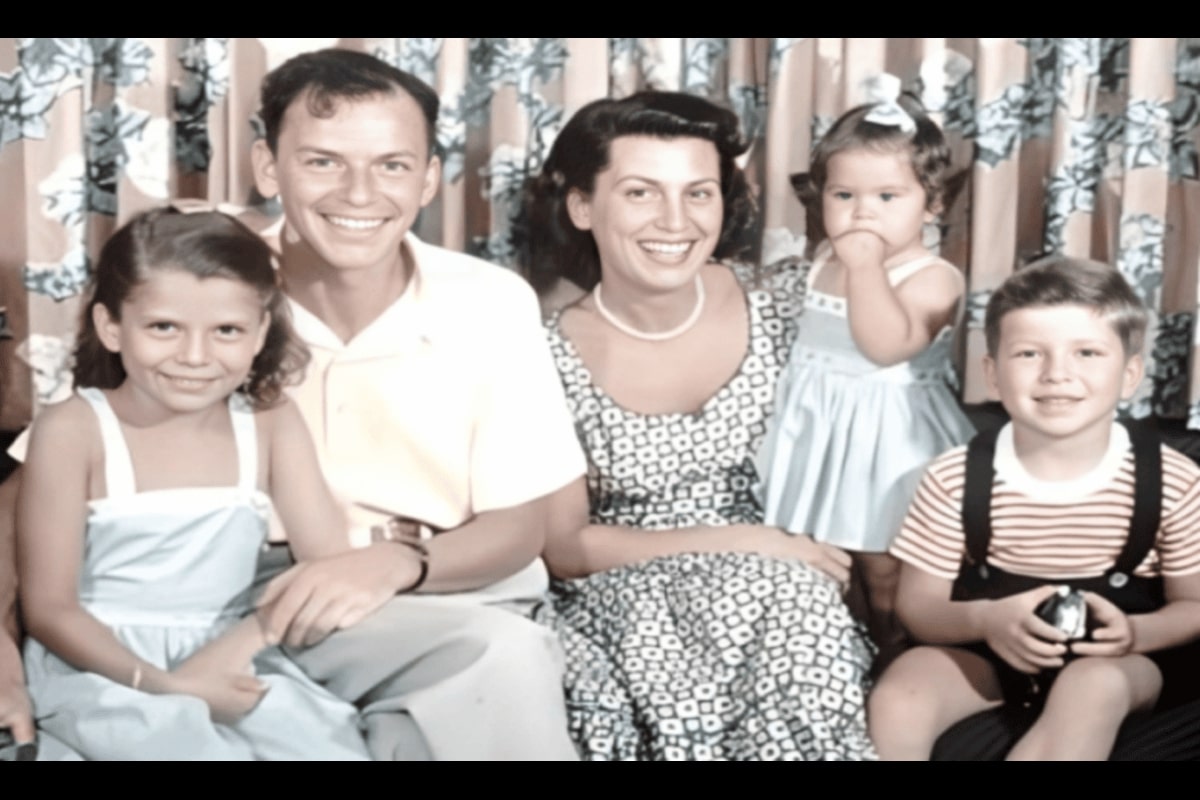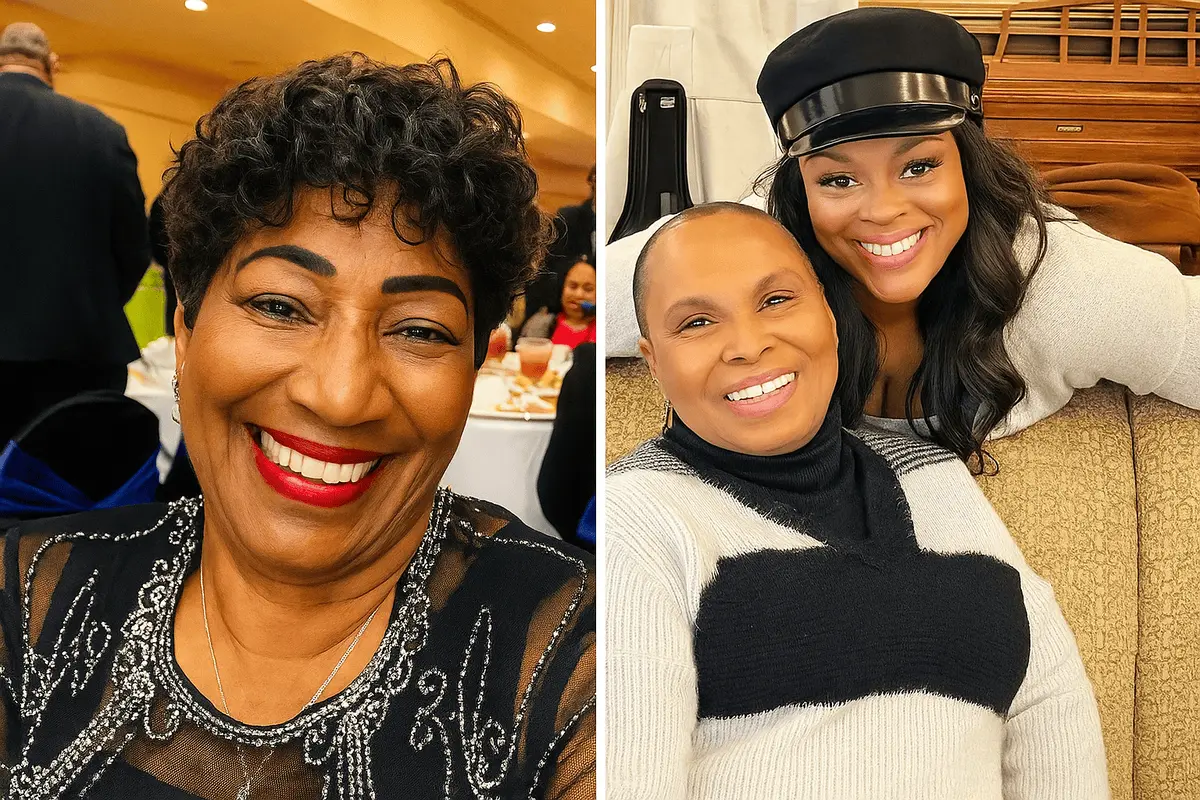Francine Sinatra Anderson: Childhood and Origins
Birth, Parents, and Family
According to numerous recent online profiles, Francine Sinatra Anderson is the eldest daughter of Frank Sinatra Jr. and Mary Wallner. Several sources indicate that she was born on November 16, 1972. This information comes from family articles and celebrity profiles but should be interpreted with caution, as her life has been little documented by the mainstream media.
The Sinatra Legacy: A Family Rooted in Music and Fame
Francine’s surname firmly places her within one of the most famous musical dynasties in the United States. Her grandfather, Frank Sinatra (often referred to as Frank Sinatra Sr.), transformed 20th-century popular music and Hollywood culture. Her father, Frank Sinatra Jr., worked in jazz and big bands, and was a conductor, choir director, and musician for decades. The Sinatra name enjoys extraordinary cultural prestige—and, consequently, intense media attention—which influenced Francine’s childhood environment.
Childhood and Environment
According to public records, Francine Sinatra Anderson was exposed to the arts from a very young age: concerts, professional encounters, and an extended family deeply involved in music and production. However, various sources emphasize that Francine Sinatra Anderson chose to live away from the spotlight, which explains why many details concerning her childhood, schooling, and formative years remain private or are only briefly mentioned in public records.
Relationships with Frank Sinatra Jr. and the Sinatra Family
Frank Sinatra Jr. and Mary Wallner: A Complex Story
Frank Sinatra Jr. had relationships that weren’t always clearly reflected in public family trees. Information about Francine Sinatra Anderson’s origins indicates that Mary Wallner was her mother and suggests that, while Frank Sinatra Jr. provided her with some financial support, he didn’t publicly acknowledge her in the same way he did his other children—a fact highlighted in several biographies that chronicle lesser-known branches of the Sinatra family. Sources vary in tone and depth, and some media outlets treat these family matters as sensitive, even controversial.
Francine Sinatra Anderson’s Connection to Frank Sinatra Sr., the Iconic Grandfather
While public attention focuses on Frank Sinatra Sr. and his most famous children (Nancy, Frank Jr., and Tina), grandchildren like Francine Sinatra Anderson are also part of this legacy. There are occasional allusions to efforts by some family members to introduce Francine to the Sinatra family, but she generally remained out of the spotlight and largely avoided actively participating in major family projects. Public members of the Sinatra family (for example, Nancy Sinatra or Tina Sinatra) often focused on preserving the patriarch’s musical legacy, while more private members led independent lives.
Family Dynamics and Underlying Conflicts
Many celebrity families navigate between close ties and distance, even personal conflicts; the Sinatra family is no exception. Accounts of children who were not acknowledged or with whom strained relationships were severed highlight the emotional complexity that accompanies fame, complicated relationships, and legal or financial arrangements. Francine Sinatra Anderson’s story, as it has been reported, fits this pattern of a complex private family life, concealed behind a famous name. To address these issues, it is essential to rely on corroborated statements. Unfortunately for researchers, public documents relating to Francine’s private family relationships are rare.
Education, Interests, and Personal Development
Academic Achievements and Artistic Exposure
Public accounts of Francine Sinatra Anderson suggest that, having grown up in an environment steeped in music and the performing arts, she benefited from an artistic education and cultural experiences that many do not. Details concerning specific schools, degrees, or institutions are not well documented in official sources; most accounts emphasize artistic exposure rather than formal qualifications. Given the private nature of her life, any academically verifiable claim should be treated with caution unless supported by primary sources.
Early Inclination for Music and the Arts
It is natural to assume that a young girl raised in Sinatra’s environment would have had at least some informal introduction to music; the sources portraying Francine Sinatra Anderson indicate an interest in the arts and an appreciation of cultural heritage. However, unlike some members of her family who pursued careers in show business, Francine reportedly did not follow a prominent path in entertainment. This choice—to participate selectively and privately rather than publicly—is a recurring theme in the accounts.
Personal Hobbies: Books, Music, and Nature
Portraits that delve into Francine Sinatra Anderson’s private life often mention more introverted and restorative hobbies: reading, listening to classical music, and enjoying nature. These activities fit the image of someone who prioritizes balance and a life away from constant media attention. While these descriptions humanize the subject, they nevertheless rely on superficial reporting rather than in-depth interviews.
Francine Sinatra Anderson’s Career and Public Image
A Life Away from the Spotlight
One of the most consistent pieces of information is Francine’s decision to live a low-key life. Unlike many members of celebrity families who work in the media, Francine Sinatra Anderson has always cultivated a certain discretion, thus preserving her privacy, both professional and personal. This choice explains the limited amount of verifiable information available about her career.
Professional Activities Outside of Entertainment
Public sources provide little information about Francine Sinatra Anderson’s career choices. When her professional activities are mentioned, she is often described as being involved in philanthropy, arts support, or private business, rather than mainstream entertainment. This trend is part of a broader pattern observed among some members of celebrity families who favor cultural administration, nonprofit work, or private careers over performing arts. However, any definitive statements about their roles or the organizations they belong to must be supported by solid documentation; in Francine’s case, such documentation is limited.
Protecting Your Privacy in the World of Fame
Protecting your privacy when you have a famous name requires a deliberate strategy: avoiding an active presence on social media, refusing interviews, and maintaining maximum discretion. Francine Sinatra Anderson seems to have chosen this path. This choice not only influences the public’s perception of her but also raises recurring questions about how the advantages and disadvantages of fame are passed down from one generation to the next.
Philanthropy and Contributions to the Arts
Support for Young and Emerging Artists
Some profiles associate Francine Sinatra Anderson with arts promotion and charitable support: discreet activities typical of families of artists. These include mentorship, small grants, and support for local culture, rather than high-profile donations. While program names and grant amounts are not always made public, this practice is common among heirs of artistic families who quietly support the next generation.
Charitable Work in Education, Health, and Culture
Public information highlights a wide range of philanthropic activities encompassing education, health, and the preservation of cultural heritage. Here again, details and official affiliations are rarely mentioned in the mainstream media; most articles are descriptive rather than documentary. If you plan to mention specific philanthropic activities in your publication, it is advisable to confirm them with primary sources (press releases, documents from non-profit organizations, or direct statements) whenever possible.
Promoting Cultural Heritage and Historical Preservation
A recurring theme among members and descendants of famous cultural families is the desire to preserve tangible and intangible heritage: archival recordings, family memorabilia, educational programs, and support for museums or performances that keep music alive. Francine’s involvement in these efforts—formal or informal—is part of this tradition, even though public records do not show any widely publicized preservation projects in her name.
Siblings and Family Connections
Natalie Oglesby Skalla, Michael Francis Sinatra, and Other Siblings
Francine is often mentioned in biographies alongside half-siblings identified as children of Frank Sinatra Jr. and other partners. Among the names mentioned are Natalie Oglesby Skalla and Michael Francis Sinatra. Information about these siblings reveals diverse life paths, ranging from volunteer work to professional careers. As with Francine, information about her siblings can vary in detail and reliability; some sources are more comprehensive than others.
Connections, Distance, and Family Relationships
Public accounts describe a mixture of connection and distance among Sinatra’s descendants, a common combination in blended families and extended dynasties. In many of these families, relationships evolve over decades; some members become more publicly connected, while others remain discreet. Francine’s life appears to reflect selective participation in family life: present in some contexts, absent in others, and generally favoring discretion.
The Shared Heritage of Sinatra’s Children
Sinatra’s children and grandchildren share a cultural heritage. Whether in music, preservation, or philanthropy, descendants often act as guardians of family cultural capital, some through high-profile initiatives, others through more discreet support. Francine is part of this broader generational story, even though she has not sought fame.
The Challenges and Privileges of the Sinatra Name
Managing Fame and Privacy
Bearing a legendary surname opens doors—networks, recognition, and opportunities—but also exposes the public to scrutiny and expectations. Francine’s apparent decision to maintain her privacy illustrates a common dilemma: minimizing media exposure to preserve autonomy. This dilemma often influences the career choices, media discourse, and even the legal and financial affairs of the heirs of famous families.
Living in the Shadow of a Legendary Family
The phrase “living in the shadow” is often used to describe the descendants of cultural icons; It reflects the dual reality of a prestigious heritage and, simultaneously, the need to forge one’s own identity. In Francine’s case, media coverage suggests that she has opted for a more private identity, building a life in accordance with her personal values rather than seeking fame.
How Francine Defines Her Identity
While public sources don’t paint a complete picture, the emerging image is that of someone who prioritizes family values, discreet commitment (philanthropy and support for the arts), and her personal interests over celebrity. This self-definition—prioritizing privacy, balance, and a specific purpose over public notoriety—constitutes a form of self-expression in itself.
Legacy and Influence
Perpetuating the Sinatra Spirit
Although her career wasn’t the most illustrious, Francine Sinatra Anderson is an integral part of the Sinatra legacy. The family’s influence on American music and culture is immense; descendants who preserve, support, and celebrate this legacy—publicly or privately—help ensure its continued existence. Francine’s philanthropic and arts-supporting activities are part of this effort.
Impact on Art, Culture, and Philanthropy
The Sinatra family name is associated with festivals, reissues, archival publications, and philanthropic projects that support arts education and heritage preservation. While the most prominent projects often involve the most famous family members, the more discreet contributions of lesser-known relatives support local institutions and artists. Francine’s support for emerging artists and cultural causes is part of this same dynamic.
The Future of the Sinatra Family Legacy
As cultural memory evolves, the Sinatra legacy will continue to be preserved by family members, heirs, and institutions. Descendants who combine heritage preservation with contemporary dissemination influence how new generations experience music. Francine Sinatra Anderson’s personal commitment—protecting the archives, supporting young talent, and funding cultural programs—is an important, though less visible, contribution to this future.
Personal Life and Current Projects
Daily Life, Passions, and Lifestyle
Portraits depicting Francine’s daily life highlight her quiet hobbies—reading, classical music, and outdoor activities—and a life centered on family and fulfilling work, rather than fame. This portrait confirms accounts that she prefers to keep her private life private.
Maintaining a Work-Life Balance
Maintaining this balance often involves setting clear boundaries with the media and public institutions. Francine Sinatra Anderson’s choices, both explicit and implicit, demonstrate the importance she places on these boundaries: she limits her presence on social media, avoids projects with a publicity focus, and dedicates herself to private philanthropy. These choices contribute to forging a reputation for stability rather than ostentation.
The Humanity Behind the Sinatra Name
Beyond the headlines and family trees lies a human story: that of a person searching for identity, family ties, and privacy in the face of the possibility of public scrutiny. Francine’s life—to the extent that public information allows us to know it—reminds us that a legacy can be lived discreetly, with a significant impact even without widespread media attention.
Conclusion: A Blend of Grace, Strength, and Independence
Francine Sinatra Anderson occupies a fascinating place in the history of the Sinatra family: heir to a monumental cultural legacy, she nevertheless chose discretion over fame. Public information—fragmentary, cautious, and often based on secondary sources—paints a picture of someone deeply involved in the arts and devoted to more private philanthropic endeavors: philanthropy, the preservation of cultural heritage, and support for young artists. While many details remain private, the available information describes Francine Sinatra Anderson as a woman who built her life around family, service, and her personal passions, rather than celebrity.
Frequently Asked Questions about Francine Sinatra Anderson
Who is Francine Sinatra Anderson?
Francine Sinatra Anderson is the eldest daughter of Frank Sinatra Jr. and Mary Wallner, and a member of the Sinatra family. She led a rather private life and is often described as someone who valued discretion and offered quiet support to the arts and philanthropic causes.
Did Frank Sinatra Jr. acknowledge Francine as his daughter?
Some accounts suggest that Frank Sinatra Jr. provided her with financial support but did not publicly acknowledge her as he did his other children. Public information on this point varies in tone and detail; it is a sensitive subject, and publicly available primary sources are limited.
Does Francine have siblings?
Yes, Francine appears alongside several half-siblings in various profiles. Publicly mentioned names include Natalie Oglesby Skalla and Michael Francis Sinatra; details regarding her siblings may vary depending on the source.










